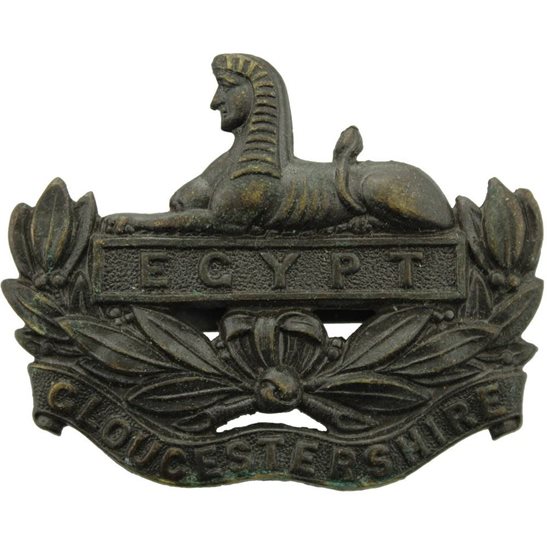Personal Details
Born: 1 April 1893 in Oswestry, Shropshire and baptised 2 June the same year in Holy Trinity Church, Oswestry.
Family: He was the third of seven children born to George Evans, a locomotive engine driver, and his wife Mary. He married Ethel Baldwin on 24 December 1917 in Eton, Buckinghamshire and together they had six children – George Thomas, Joyce M, Frederick J, Beryl M, Gwendoline D and Jessica N.
Residence: The family were living at 75 Beatrice Street, Oswestry at the time of his baptism. By 1901 they had moved to 18 Llwyn Road, Oswestry and by 1911 to 16 Edgerton Road, Whitchurch, Shropshire. The address shown on the 1919 Absent Voters’ Register is 36 Worthington Street where he continued to live with his wife and children until at least 1939.
Employment: In 1911 he was a shop assistant; in 1939 he was a railway goods guard.
Died: In 1981 in North Shropshire, aged 87.
Military Details
Regiment: Gloucestershire Regiment (previously Labour Corps and Liverpool Regiment)
Rank: Private
Service Number: 203498 (previously 468491 and 4146)
Date of Enlistment: 14 May 1915
Date of Discharge: 10 October 1918
Reason for Discharge: No longer physically fit, resulting from shell shock.
Other Information: Brother of George Thomas who also served in WW1.
Frederick was awarded the Campaign Medals (1915 Star, British War Medal, and Victory Medal) and the Silver War Badge (number B217093).

The 1914 Star (also known as 'Pip') was authorised under Special Army Order no. 350 in November 1917 and by an Admiralty Fleet Order in 1918, for award to officers and men of the British and Indian Expeditionary Forces who served in France or Belgium between 5 August and midnight of 22–23 November 1914. The former date is the day after Britain's declaration of war against the Central Powers, and the closing date marks the end of the First Battle of Ypres.
The 1914–15 Star (also known as 'Pip') was instituted in December 1918 and was awarded to officers and men of British and Imperial forces who served against the Central European Powers in any theatre of the Great War between 5 August 1914 and 31 December 1915. The period of eligibility was prior to the introduction of the Military Service Act 1916, which instituted conscription in Britain.
The British War Medal (also known as 'Squeak') was a silver or bronze medal awarded to officers and men of the British and Imperial Forces who either entered a theatre of war or entered service overseas between 5th August 1914 and 11th November 1918 inclusive. This was later extended to services in Russia, Siberia and some other areas in 1919 and 1920. Approximately 6.5 million British War Medals were issued. Approximately 6.4 million of these were the silver versions of this medal. Around 110,000 of a bronze version were issued mainly to Chinese, Maltese and Indian Labour Corps. The front (obv or obverse) of the medal depicts the head of George V. The recipient's service number, rank, name and unit was impressed on the rim.
The Allied Victory Medal (also known as 'Wilfred') was issued by each of the allies. It was decided that each of the allies should each issue their own bronze victory medal with a similar design, similar equivalent wording and identical ribbon. The British medal was designed by W. McMillan. The front depicts a winged classical figure representing victory. Approximately 5.7 million victory medals were issued. Interestingly, eligibility for this medal was more restrictive and not everyone who received the British War Medal ('Squeak') also received the Victory Medal ('Wilfred'). However, in general, all recipients of 'Wilfred' also received 'Squeak' and all recipients of The 1914 Star or The 1914/1915 Star (also known as 'Pip') also received both 'Squeak' and 'Wilfred'. The recipient's service number, rank, name and unit was impressed on the rim.

The Silver War Badge was issued in the United Kingdom and the British Empire to service personnel who had been honourably discharged due to wounds or sickness from military service in World War I. The badge, sometimes known as the "Discharge Badge", the "Wound Badge" or "Services Rendered Badge", was first issued in September 1916, along with an official certificate of entitlement.

